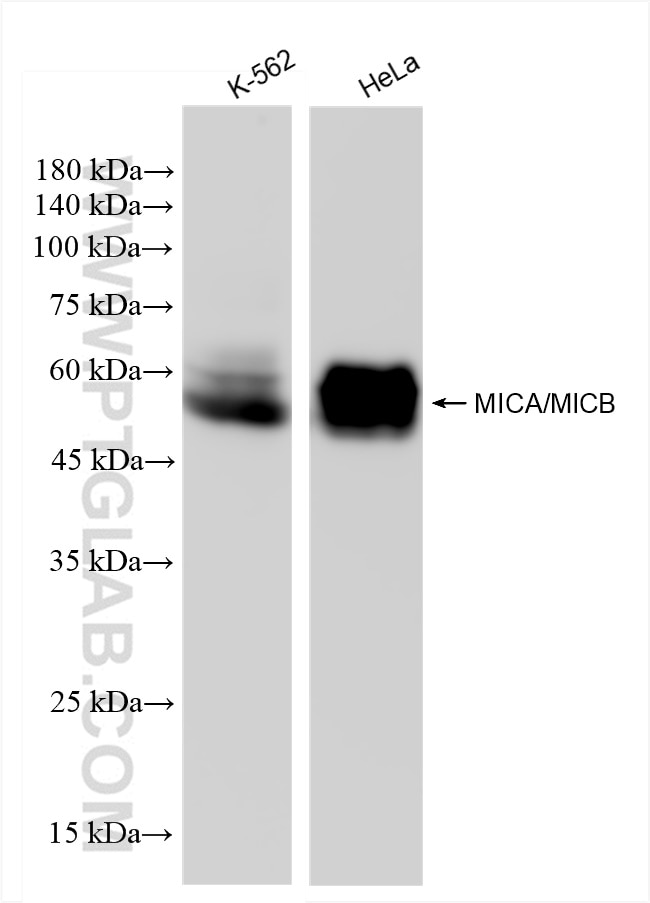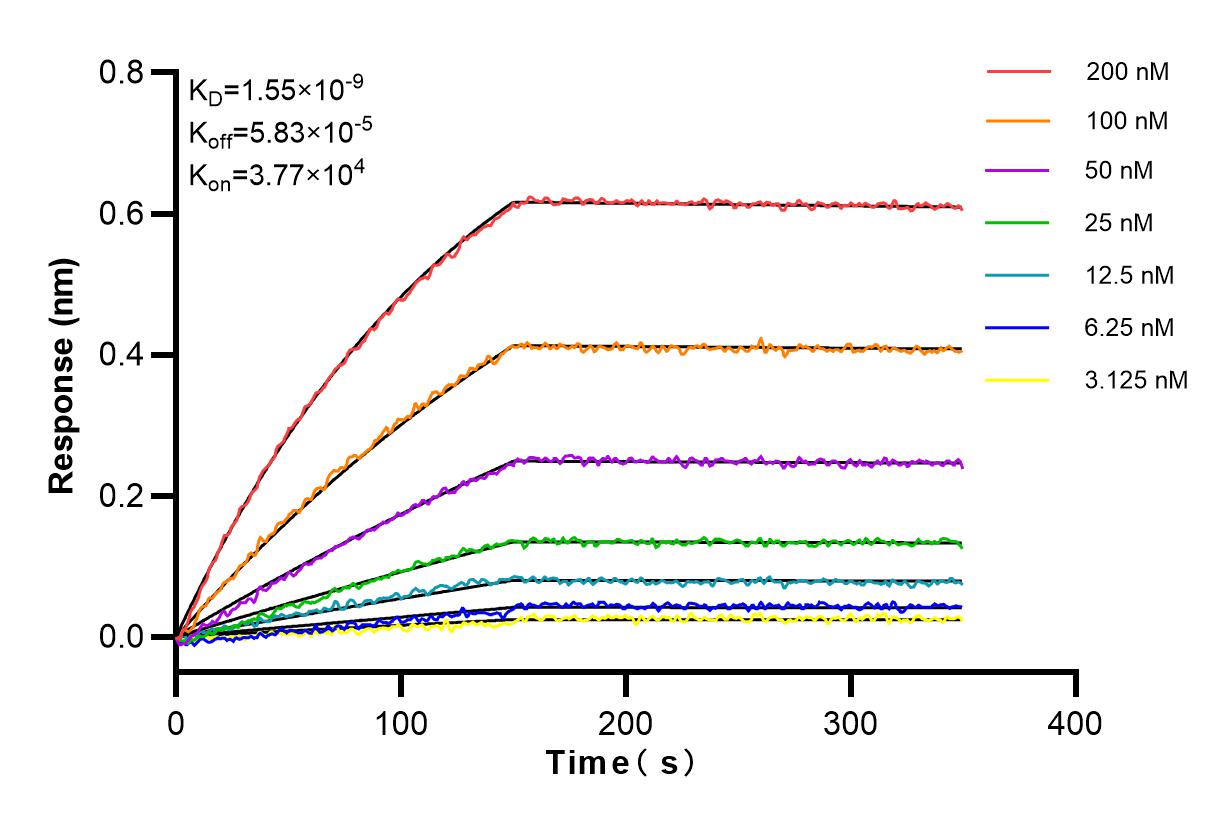Tested Applications
| Positive WB detected in | K-562 cells, HeLa cells |
Recommended dilution
| Application | Dilution |
|---|---|
| Western Blot (WB) | WB : 1:2000-1:16000 |
| It is recommended that this reagent should be titrated in each testing system to obtain optimal results. | |
| Sample-dependent, Check data in validation data gallery. | |
Product Information
83725-5-RR targets MICA/MICB in WB, ELISA applications and shows reactivity with human samples.
| Tested Reactivity | human |
| Host / Isotype | Rabbit / IgG |
| Class | Recombinant |
| Type | Antibody |
| Immunogen | Recombinant protein Predict reactive species |
| Full Name | MHC class I polypeptide-related sequence A |
| Calculated Molecular Weight | 43 kDa |
| Observed Molecular Weight | 50-60 kDa |
| GenBank Accession Number | AAH16929.1 |
| Gene Symbol | MICA |
| Gene ID (NCBI) | 100507436 |
| RRID | AB_3671325 |
| Conjugate | Unconjugated |
| Form | Liquid |
| Purification Method | Protein A purfication |
| Storage Buffer | PBS with 0.02% sodium azide and 50% glycerol pH 7.3. |
| Storage Conditions | Store at -20°C. Stable for one year after shipment. Aliquoting is unnecessary for -20oC storage. 20ul sizes contain 0.1% BSA. |
Background Information
Human MHC class I chain-related genes located within the HLA class I region of chromosome 6 encode MHC class I chain-related A and B (MICA and MICB) (PMID: 11429322). MICA and MICB are stress-inducible surface molecules that are not associated with β2-microglobulin and do not present peptides (PMID: 9497295). They are expressed in intestinal epithelium and many epithelial tumors (PMID: 10359807). MICA and MICB are ligands for NKG2D which is an activating receptor that is expressed on most natural killer (NK) cells, CD8 αβ T cells, and γδ T cells (PMID: 10426993; 11491531). This antibody recognizes both MICA and MICB.
Protocols
| Product Specific Protocols | |
|---|---|
| WB protocol for MICA/MICB antibody 83725-5-RR | Download protocol |
| Standard Protocols | |
|---|---|
| Click here to view our Standard Protocols |





